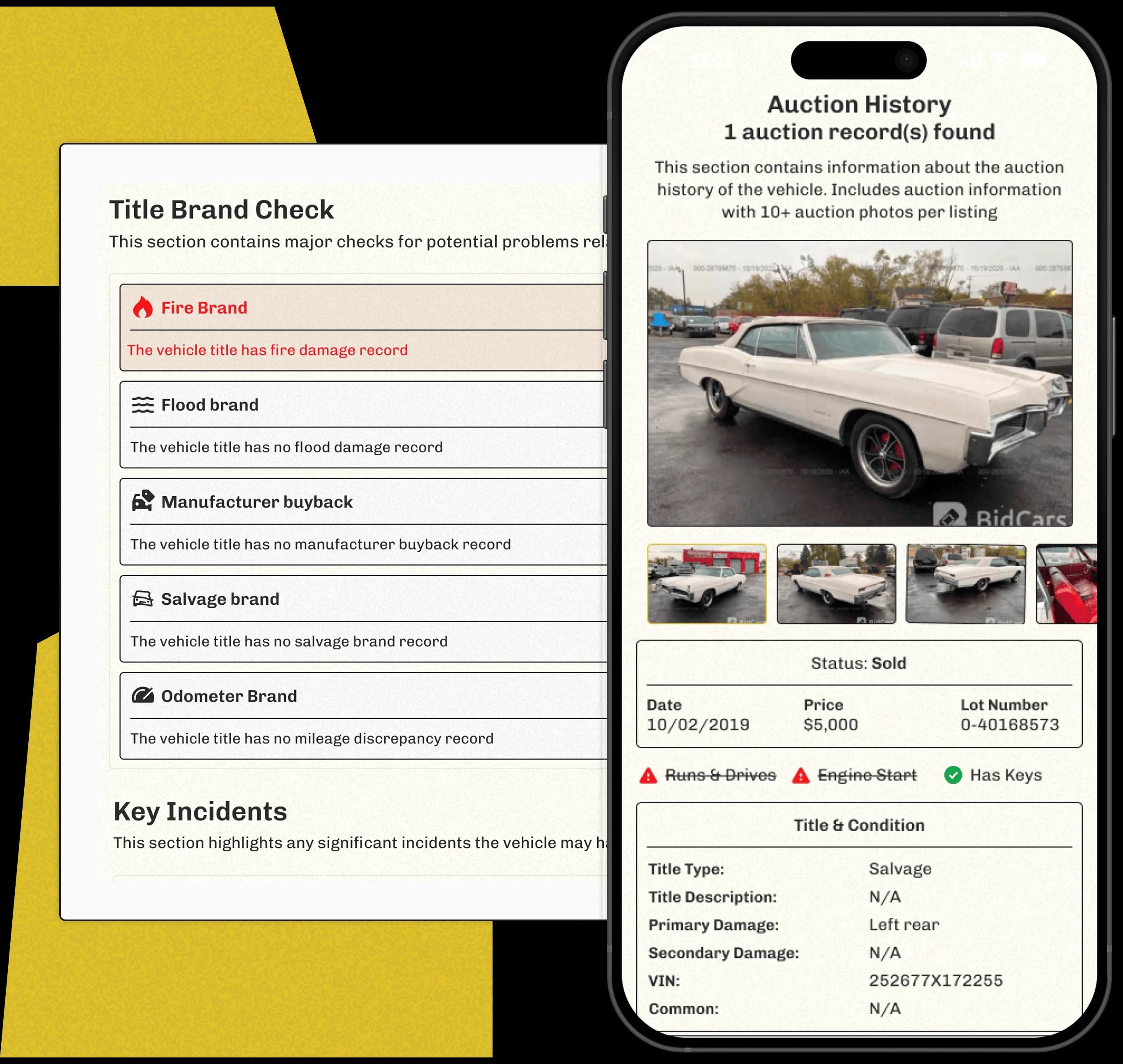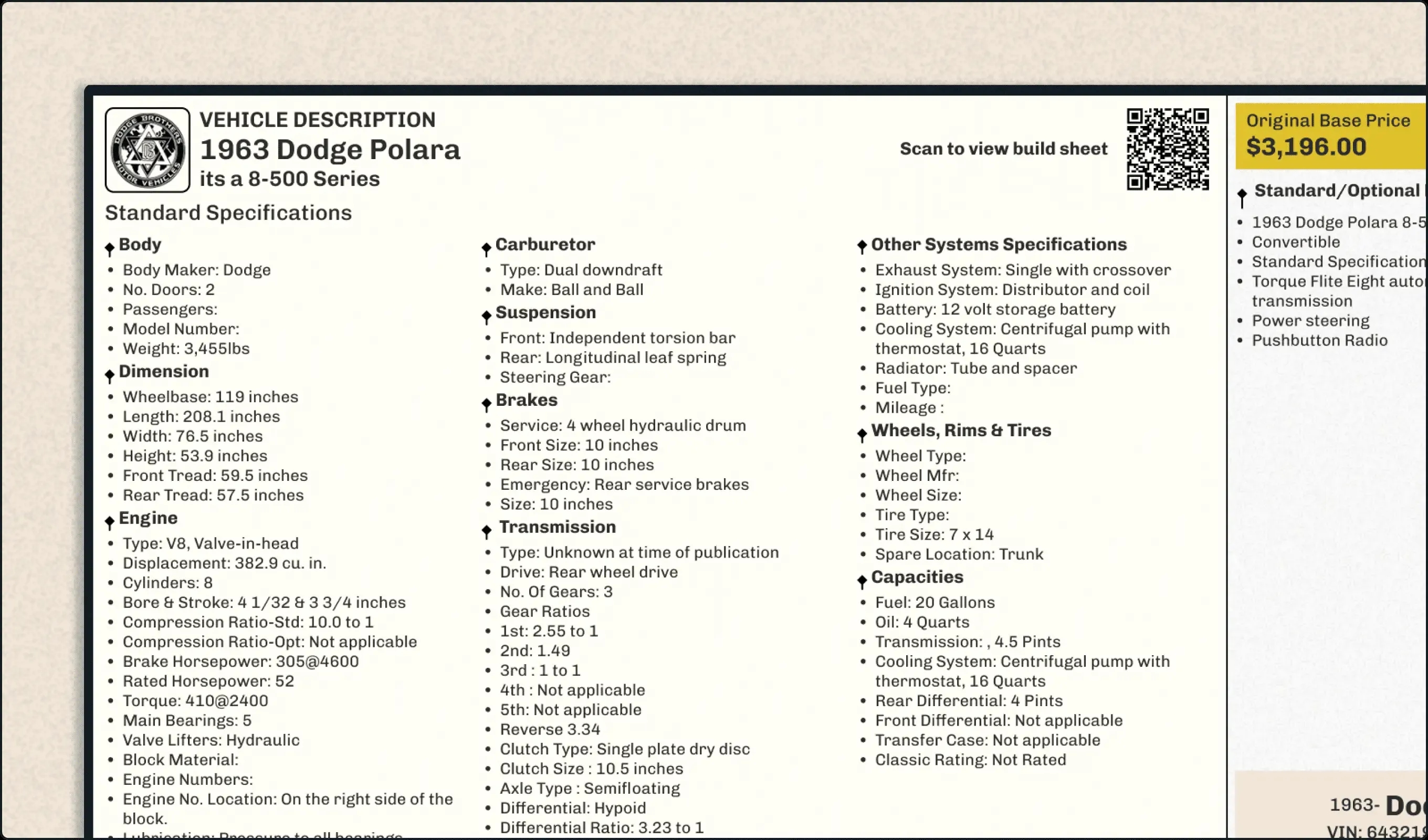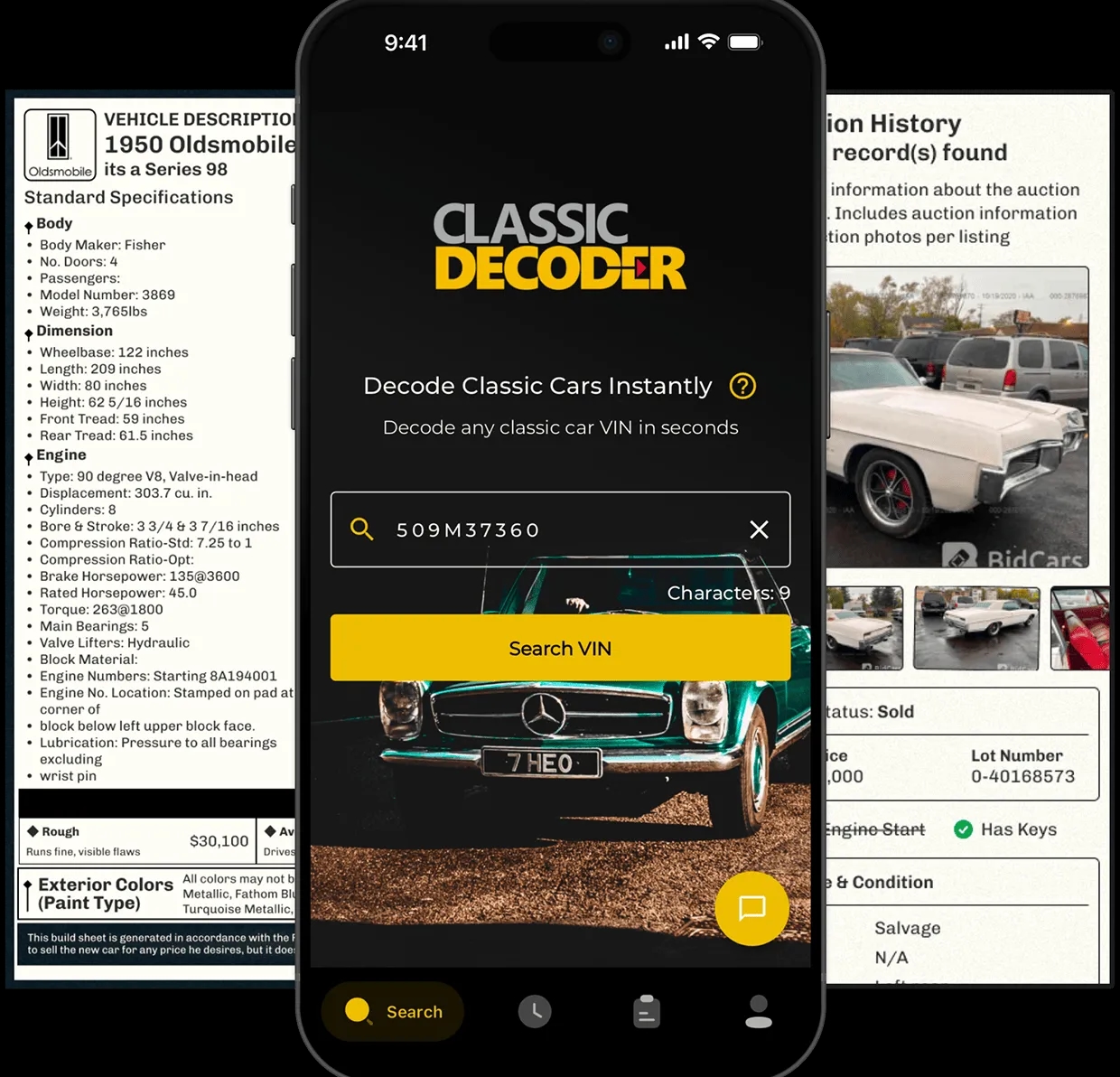1953 Plymouth Cranbrook
The 1953 Plymouth Cranbrook: a stylish, affordable family car! Part of post-war optimism, it offered a taste of luxury for the everyday person. Its sleek, curved lines were a departure from boxier predecessors, making it a memorable mid-century cruiser. A true icon of its time!
Decode Classic VINs to Get Vehicle History Report and Build Sheet
The 1953 Plymouth Cranbrook: A Glimpse into Automotive History
The 1953 Plymouth Cranbrook holds a special place in the hearts of classic car enthusiasts. It's a car that symbolizes both the spirit of post-war America and the optimistic drive toward innovation in the automotive industry. With its introduction of features like automatic transmission and power steering, it captured the essence of 1950s' American motoring. But beyond the nuts and bolts, the Cranbrook is a vehicle with a story worth telling—a story preserved in every well-maintained model and its journey through the hands of various collectors.

1953 Plymouth Cranbrook Models:
Select the vehicle's model to see the correct data for it.
How Much is Plymouth Cranbrook Worth?
Original MSRP :$1,744.00
Outstanding
Clean
Average
Rough
1953 Plymouth Cranbrook Specs
Interested in buying a classic car or selling one?
Access detailed history reports for classic vehicles from hundreds of manufacturers.
- Accident Records
- Theft Records
- Loan & Lien Information
- Auction Information
- Salvage Information and more

History of 1953 Plymouth Cranbrook
Diving into its history, the Cranbrook emerged in a transformative period for the auto industry. The early 1950s were all about change—brands were racing to modernize and innovate. Chrysler's Plymouth was no exception, strategically rolling out the Cranbrook amidst a burgeoning post-war economy. Despite some hitches like a maze-like dealer network, the Cranbrook held its ground, enticing families with competitive pricing and sturdy design.
Learn more about a classic car: Get Build Sheet by VIN.
Access reproduced classic build sheets to learn more about your classic vehicle details.
- Standard Specifications
- Original Base Price
- Standard & Optional Equipment
- Exterior & Interior Colors
- VIN ID & Location description

Detailed Specifications
Want to know more about the specs? Well, under its hood, the Cranbrook sported a flathead six-cylinder engine. Now, it wasn't about winning races, but that engine gave it a blend of reliability and a bit of zest—enough to get folks comfortably around town and countryside alike. And let's not forget the soft suspension that practically glided over bumps.
Famous Figures Who Owned the Cranbrook
Let's talk about the legends who've owned this classic. Ever heard of Bill Harrah? A titan in the collecting world, Harrah snagged a Cranbrook back in 1978, adding it to his vast collection of automotive masterpieces. And then there's Ralph Engelstad, Las Vegas' Imperial Palace owner, who kept this legend alive with just a touch of glamour.
Bill Harrah
Bill Harrah's collection was a wonder. Imagine over 1,400 vehicles under one roof! When Harrah secured a Cranbrook, it was a testament to the car's allure—a statement piece among the most luxurious.
Ralph Engelstad
On the other hand, Engelstad picked up the Cranbrook in the mid-'80s. It was practically brand new with only 20 miles on it. He tuned it up, making it fully road-ready, thus bolstering its reputation among collectible classics.
1953 Plymouth Cranbrook Gallery





Price Records
In the world of auctions and shows, the Cranbrook has seen its share of action. For example, a prime model in #1 Concours condition fetches around $16,800 nowadays. This isn't just about the sticker price—it's about the story every scratch and retouch tells.
Pop Culture Presence
This car wasn't just about getting from point A to B. It was a cultural icon, gracing films and music, emblematic of the American dream and freedom. The Cranbrook captured a slice of Americana, one drive at a time.
Fun Facts about Plymouth Cranbrook
Featured in numerous '50s and '60s films.
Known for its durability and classic aesthetic.
The Cranbrook was a favorite for mid-century American suburbs—a symbol of prosperity and leisure.
Interested in Buying or Selling a Classic Car?
Thinking about dipping your toes into the classic car market? Here's what you need to know: Having a solid understanding of a classic car's history can dramatically affect its value. Essential tools like a vehicle history report and a car build sheet are critical when buying or selling a classic vehicle:
Accident Records
Theft Records
Loan & Lien Information
Auction Information
Salvage Information and more...
Trust me, if you're eyeing that dream car or thinking of letting one go, a classic car history report is your best companion. And don't forget a [classic car VIN lookup](https://classicdecoder.com) before diving into the world of classic cars.
While exploring all this, a detailed [pre-1981 VIN decoder](https://classicdecoder.com/vin-decoder) is your go-to for classic models. For those with unique chassis numbers, a [13 digit VIN check](https://classicdecoder.com/vin-decoder/13-digit) or a [7 digit VIN decoder](https://classicdecoder.com/vin-decoder/7-digit) can clear up any mystery surrounding your vintage treasure.
In the grand tapestry of classic cars, the Plymouth Cranbrook stands as a vibrant patch of American history, woven with stories of innovation, iconic personalities, and enduring legacy.
Classic Car VIN Lookup App |Now available on both Android and iOS!
At Classic Decoder, we believe that developing a mobile app is a great way to extend our classic car data solution hub to as many users as possible across the globe. Our app is built with users and precision in mind. It holds the key to unlocking the history and details of any retro car at your fingertips. It also comes with fascinating and user-friendly features that make it stand out from other mobile apps designed for this purpose.
The Classic Decoder app lets you decode and lookup any classic VIN in a flash. Access accurate vehicle information and history, make an informed decision faster, and buy and trade in classic cars with confidence.

Download The Classic Decoder App now.
Some unique features include:
- Support all classic VIN lengths from 5 to 13 digits
- Support classic cars produced from 1910 – 1980
- Online Garage features – to add and manage your vehicles
- 24/7 Customer Support
- Easy onboarding for first-time users
Explore The Most Popular Classic Cars
Frequently Asked Questions
Well, let's see… spotting a '53 Cranbrook is easier than you might think! They're pretty distinctive, you know? Think of its profile – it's got that classic, long hood, short deck look that was so popular back then; it's really what defined the style of the era. The chrome is usually pretty flashy, especially on the bumpers and grille – that's a big giveaway. And, of course, there's the iconic Plymouth emblem; you can't miss it! Oh, and one more thing – the taillights are typically quite distinctive and easy to pick out. So, keep an eye out for those key features, and you should be able to spot a '53 Cranbrook pretty quickly.
The '53 Cranbrook came with a couple of engine choices. Most commonly, you'd find the trusty 217.8 cubic inch L-head six-cylinder, a workhorse of an engine – very reliable, and it'll keep chugging along like a well-oiled machine. However, there was also a more powerful option available – a 230 cubic inch flathead six-cylinder engine. This one provided a bit more oomph; it was a nice step up if you wanted a little extra get-up-and-go. Think of it like choosing between a reliable sedan and a sportier version of the same car. It really depended on what the buyer was after.
The 1953 Plymouth Cranbrook, in its own time, offered several body styles. You could snag yourself a two-door coupe – a really sleek ride, a stylish two-door model which was very common. Or, if you needed more space, they also made a four-door sedan; perfect for families. Frankly, the coupe was the more popular choice; it was seen as way more stylish in that day and age. It's a classic example of the era's aesthetic.
Now, this is tricky because it really depends on the condition of the vehicle and how original the car is. A completely restored, mint condition Cranbrook, that's a different story altogether; you're likely looking at a significantly higher price tag; that sort of thing is rare and highly sought after, like a collector's item, so it often fetches a premium price. Conversely, a project car, needing a good deal of work, might be more affordable – but you’ll need to factor in the restoration costs. Basically, do your homework; check out online auction sites and classic car valuation guides to get a better idea of the prices in your area. It's all about the condition, really.
Finding parts can be a bit of a treasure hunt, but you'll find a community out there who are into these beauties; a lot of owners are in similar situations. Online forums dedicated to classic car restoration are a good place to start. There are also specialist suppliers who focus on parts for older Plymouths; they sometimes have parts that even a junkyard wouldn’t have, you know? Plus, you might want to look into classic car shows and swap meets; those places are great for sourcing hard-to-find parts. You never know what treasures you might discover!

